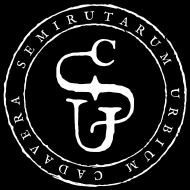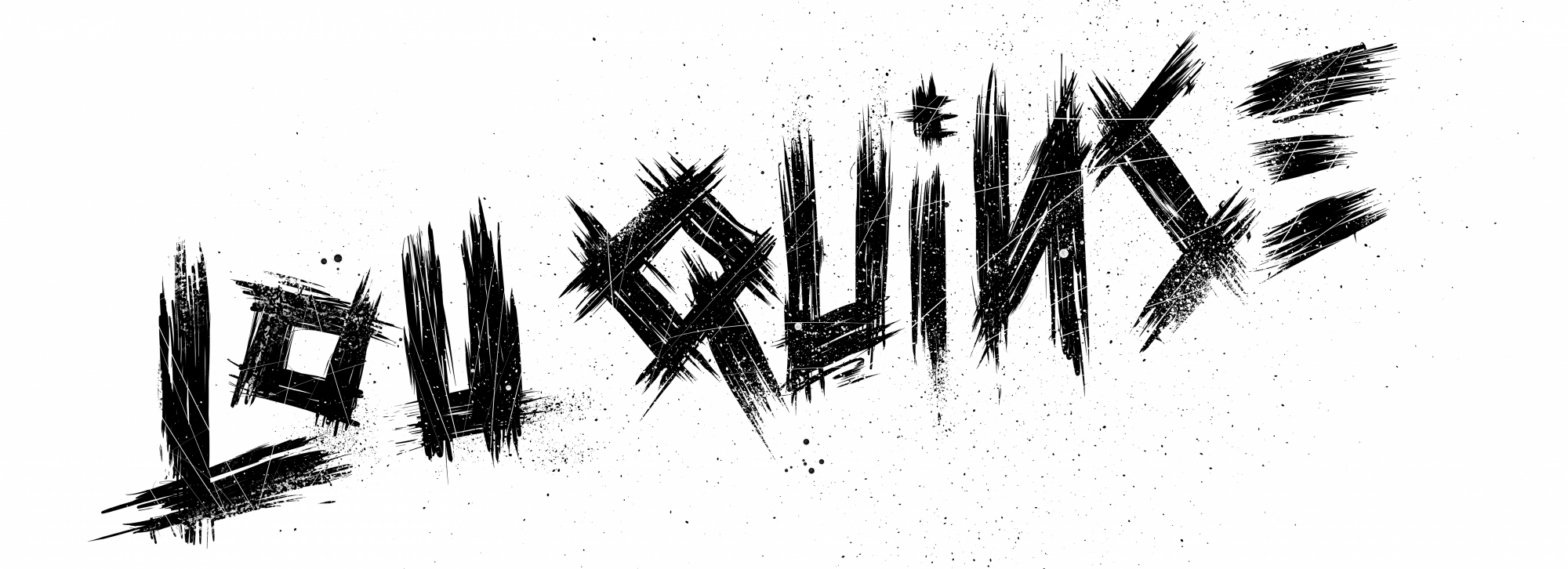[EN] While we wait for the new EP “A la Montanha/Lo Barban”, premiered by the Antifascist Black Metal Network on the 18th of May at 17 (GMT+2), we propose an interesting conversation with Lou Quinse, populous folk-black band with a profound punk attitude, hailing from Piedmont, from the Alps, or maybe directly from the folkish struggles of Occitane.
We spoke with them about their music, but also and especially about what it means to connect music and politics, about self-management, DIY and about metal and struggle.
To make it easy we divided the chat in two parts, below you’ll find the first part, the second will be available tomorrow.
—
[IT] In attesa dell’uscita del nuovo EP “A la Montanha/Lo Barban”, che verrà pubblicato in premiere dall’Antifascist Black Metal il 18 maggio alle ore 17 (GMT+2), proponiamo un’interessante conversazione con Lou Quinse, popolosa band folk-black ma profondamente punk proveniente dal Piemonte, dalle Alpi, o forse direttamente dalle lotte popolari occitane.
Con loro abbiamo parlato della loro particolare proposta musicale, ma anche e soprattutto di cosa voglia dire unire politica e musica, dell’autogestione, del DIY e di metal e lotta.
Per non rendere la lettura troppo impegnativa abbiamo diviso in due parti la chiacchierata, a seguire trovate la prima, la seconda invece verrà pubblicata domani!
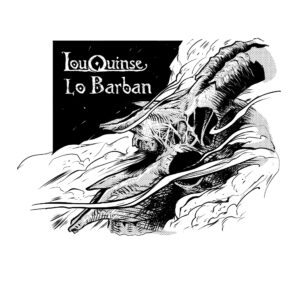 Hi comrades, do you want to tell us the story of your musical project? How, when and where was Lou Quinse born?
Hi comrades, do you want to tell us the story of your musical project? How, when and where was Lou Quinse born?
Lou Quinse was born in Balme, a village of val d’Ala, in August 2006, in a car (a glorious white small Panda – a well-known cheap but sturdy Italian car) during a “chiusino”, which means having the windows up and a joint each. For some years we were passionately following Lou Dalfin’s folk-rock and during that same summer, we got a copy of Malombra by Hantaoma, who mercilessly taught us how you could combine black metal with an alpine repertoire. I.Lo Bagat was learning to play the melodeon and we were thinking to build up an alternative repertoire for our already existent hardcore/thrash metal band Heretica in order to play at the Balme folk fest (Barmes Folk), that at the time we didn’t do. After a while, we rented a rehearsal room where we could play like, always, with other bands from the Turinese scene, with which we came up with the same idea but this time not as an alternative repertoire anymore, but as an actual side project of everyone, something like a “super-band”. Many people liked the idea and joined the band and we can say that we still love it.
As we deal mostly with more classical black metal and punk, we’re used to quite a standard band formation: vocals, guitars and bass, drums and sometimes keyboards or synths. However, your music is full of the most disparate sonorities. Do you want to make an overview of the instruments that compose your songs?
Our band includes bass guitar, drums, two guitars, voice and a diatonic button accordion: basically, the only traditional instrument that has been constantly present in our history.
In the 2008 “Rondeau de la forca” demo, besides this formation we had a transverse flute, thus metallic and with a more classic and soft sound, the hurdy-gurdy, the most iconic instrument of Alpine music, dry and similar to the bagpipes, but equipped with a rhythmic and hypnotic bourdon, as well as some passages with the bouzouki.
In “Lo Sabbat” on the contrary we didn’t have the hurdy-gurdy and the transverse flute, but we had the straight wooden flute, mostly, and some metallic ones too, sharper and more primitive, and we also had the boha, a little type of bagpipes.
In this album, there also are some percussions that aid the drums: djambè, surdo (which is a Brasilian bass drum), bells, both Irish and Tarantella’s tambourines, a berimbau as well as some passages with the bouzouki and a feature with a “chitarra battente calabrese” (Italian guitar).
Through the years, two bagpipers played live with us: XX.Lo Judici and mostly II.La Papessa, who since last year came back in the band with her enormous medieval bagpipes.
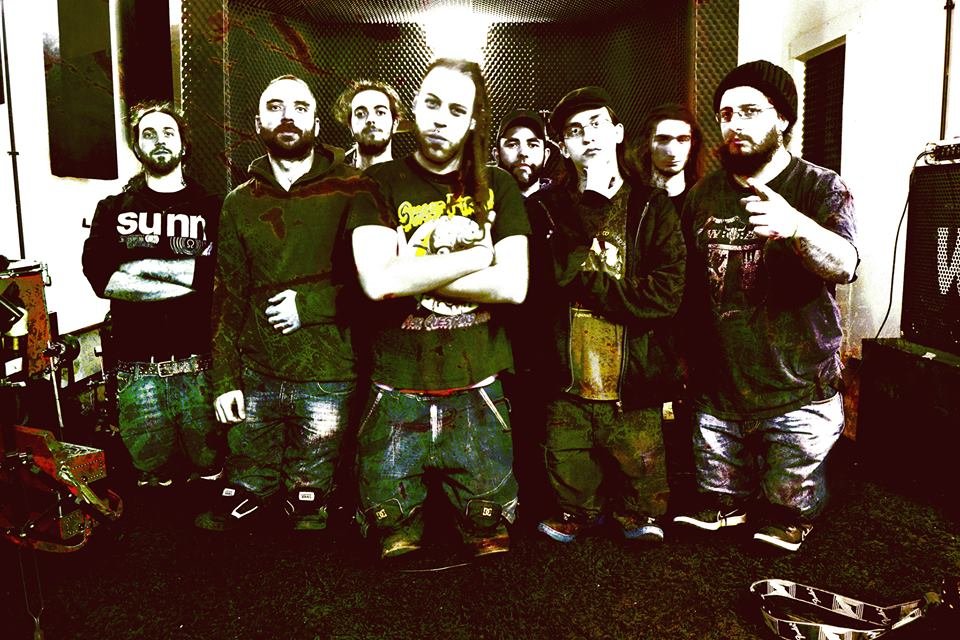
Musically you propose a folkish black metal that reminds the Scandinavian extreme folk (Finntroll, Svartsot, Trollfest) while it’s also a far relative to less aggressive folk metal which is also known in our places (Folkstone from Bergamo and Eluveitie from Switzerland). What brought you to this sound? Which other bands (even non necessarily metal), which inspirations?
Right, here surely an argument on the already quoted repertoire is necessary to clarify our influences. Lou Quinse doesn’t write original songs, but it arranges traditional songs that come from different collections, alpine or not, especially from the Occitania region.
In this sense then we listen to many bands and authors who, before us or at our time, kept even ancient songs alive. Speaking of this “coverisation”, surely Lou Dalfin have been masters for us. For those who don’t know them, they made covers of traditional music from Occitania, contaminating it with rock and, in general, alternative music, from punk to reggae. Being clever monopolists, they even physically and personally taught some of us how to play traditional instruments.
Considering that we, at least partially, always thought to handle metal as traditional music, mixing a lot with genres, the influences and references, anything we listened to with passion through the years determined our style: clearly you have loads of black metal also because it fits perfectly folk, but you also have thrash and thrash-hc, death metal, NWOBHM and, maybe more concealed, a lot of “post” mentality.
Speaking of real folk metal, on the contrary, if we exclude the already mentioned Hantaoma, it didn’t really influence us that much, also because it isn’t really matched by a philological work on the tracks or lyrics, but it is just usually limited to excessive use of synths and Northern atmospheres, playing as Drakkars on the Lago Maggiore. Sure, we followed passionately the second European folk metal wave, especially appreciating Finntroll, Korpiklaani and In Extremo while if we go back in time you find Ulver’s “Bergtatt” which we generally consider our favourite album, but the rhythms and melodies they base their music on are too much North Europeans compared to the Alpine music we play.
We can say different things when talking about the Italian folk scene, with which we have a beautiful relationship that leads various times to collaboration through the years: Folkstone firstly, even though they play a celtic rock again far from our intentions and sensitivity.
Lou Quinse lyrics are mostly in Occitan, even though you often have struggle songs from other parts of Italy in your albums. What is the concept behind Lou Quinse?
Naturally choosing the Occitan repertoire is not random, and also naturally it’s not related to identitarian bullshit. On the contrary, the history of Occitania is a beautiful while terrifying vicissitude of subjugation and theft, but also of heresy and resistance. Occitania saw the slaughter of the Cathars, and it is a big transnational region, which includes the diverse and cosmopolitan city of Marseille, and which never tolerated nations and borders. This music, but in general the Alpinian music, is very far from the nationalist romanticism of the ‘800 and from its ‘900’s transformation into an ideology of blood and soil: in fact, there are many songs against the States’ wars, which deprive villages of their youth and that are unleashed against other people, far and brotherly.
It goes without saying, it’s not only struggle music, it is also the music of celebration and of living communally, which often sees rebel and independent women as protagonists.
Folk music, finally, is a music which travels, and oftentimes the melodies of very different songs are the same, so you can have a mash-up of lyrics and inspirations seemingly far from each other, but in reality so close that they correspond.
For us, this was the case of the medley between the song from the northern Germanasca valley “Chanter boire et rire rire” and Emilian “La leggera”: while we start working on the first we noticed that the melody and rhythm were the same, and so that we could mix and alternate these two praises of living in idleness, which is also ours.
What we decided to add to this already rich panorama is the metal contamination, which in addition to expressing itself orchestrally, makes the atmosphere more radical and coarsed, the message more potent and dark: the right mix between a sabba and the tavern.
The music that we propose is then the music of the exploited, the oppressed, bandits and rebels.
Read the second part here!
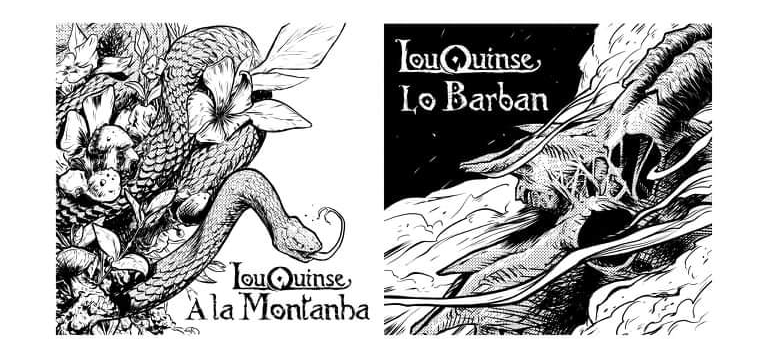
 Remember to set a reminder for the EP Premiere (link here)!
Remember to set a reminder for the EP Premiere (link here)!
 Ciao, ci volete raccontare la storia del vostro progetto musicale? Come nasce Lou Quinse, dove e quando?
Ciao, ci volete raccontare la storia del vostro progetto musicale? Come nasce Lou Quinse, dove e quando?
Lou Quinse nasce a Balme, un villaggio dell’alta val d’Ala, ad agosto del 2006, dentro una macchina (una gloriosissima Pandina bianca), durante un “chiusino”, cioè finestrini su e una canna a testa.
Da qualche anno seguivamo con passione il folk-rock dei Lou Dalfin e quell’estate eravamo entrat in possesso di una copia di Malombra degli Hantaoma, che ci insegnavano senza pietà come si potevano mettere insieme black metal e repertorio alpino. I.Lo Bagat stava imparando a suonare l’organetto diatonico e pensavamo di costruire un repertorio alternativo per un nostro gruppo esistente, gli hardcore/thrashers Heretica, per poter suonare alla festa folk di Balme (Barmes Folk), cosa che ovviamente li per li non abbiamo fatto.
Poco dopo però ci capita di prendere in affitto una sala prove, dentro la quale potevamo suonare quindi tipo sempre, con altri gruppi della scena torinese, con i quali rispolveriamo l’idea, sta volta non più come repertorio alternativo, ma come vero e proprio side project di tutt, una specie di “super gruppo” . L’idea è piaciuta a molt che si sono unit e possiamo dire che piaccia ancora.
Avendo a che fare principalmente con black metal e punk più classici siamo abituati a una strumentazione piuttosto standard: voce, chitarre e basso, batteria, talvolta tastiere o synth. La vostra musica però è ricca delle sonorità più disparate, volete farci una panoramica degli strumenti che compongono le vostre canzoni?
La nostra formazione base si compone di basso, batteria, due chitarre, voce e organetto diatonico, di fatto l’unico strumento tradizionale rimasto costante nella nostra storia.
Nel demo del 2008 e in “Rondeau de la forca”, accanto a questa formazione c’è il flauto traverso, quindi metallico e con un suono classico e morbido, la ghironda, lo strumento più iconico della musica alpina, secco e simile alla cornamusa, però dotato di un bordone ritmico e ipnotico, e alcuni passaggi di bouzouki.
Ne “Lo Sabbat”invece non ci sono più ghironda e traverso, ma flauti dritti di legno,soprattutto, ma anche di metallo, quindi più squillanti e primitivi, e la boha, che è una cornamusa di piccole dimensioni.
In questo disco ci sono anche diverse percussioni che accompagnano la batteria, djambè, surdo (che è un tamburo brasiliano molto profondo), campanacci, tamburelli sia irlandesi che da tarantella e berimbau, oltre a passaggi di bouzouki e un featuring di chitarra battente calabrese.
Nel corso degli anni poi, dal vivo, ci siamo spesso accompagnat a due cornamusiste, XX.Lo Judici e soprattutto II.La Papessa, che dall’anno scorso è tornata in formazione con la sua gigantesca cornamusa medievale.

Musicalmente proponete un black metal folkeggiante, che ricorda da vicino il folk estremo nordeuropeo (Finntroll, Svartsot, Trollfest) ed è un più lontano parente del folk metal meno aggressivo e non sconosciuto anche alle nostre latitudini (Folkstone da Bergamo, Eluveitie dalla Svizzera). Cosa vi ha portato a proporre questo suono? Quali ascolti (anche non prettamente metal), quali ispirazioni?
Ecco,qui sicuramente il discorso sul già citato repertorio, è fondamentale nel chiarire le nostre influenze. Lou Quinse non scrive brani originali, ma reinterpreta brani tradizionali che provengono da diversi repertori (che sono le collezioni di canzoni) alpini e non, in particolare da quello occitano.
In questo senso quindi ascoltiamo moltissimo gruppi e autori che a loro volta, prima di noi o a noi contemporanei, hanno mantenuto vivi pezzi anche molto antichi. Nel senso della riproposta di questo materiale, ovviamente i Lou Dalfin per noi sono stati maestri assoluti. Per chi non li conosce, in Piemonte a partire dagli anni ‘80 hanno riproposto molta della tradizione occitana, contaminandola con il rock e in generale con la musica alternativa, dal punk al reggae. Da astuti monopolisti, hanno anche fisicamente e personalmente insegnato ad alcun di noi a suonare gli strumenti tradizionali.
Siccome poi, almeno in parte, abbiamo sempre pensato di trattare anche il metal come una musica tradizionale, svarionando parecchio sugli stili, le influenze e i rimandi, qualsiasi cosa ascoltiamo con passione negli anni ha determinato il nostro stile: chiaramente c’è molto black anche perché si sposa splendidamente con il folk, ma anche thrash e thrash-hc, death metal, NWOBHM e, forse più sottotraccia, un bel po’ di mentalità post.
Per quanto riguarda il folk metal vero e proprio invece, a parte i sopracitati Hantaoma, non ci ha mai influenzat più di tanto, anche perchè molto spesso non è accompagnato da un lavoro filologico sui pezzi o sui testi ma si limita ad un uso smodato di synth ed atmosfere nordicheggianti, suonando un po’ da drakkar sul lago Maggiore. Certo abbiamo seguito con passione la seconda onda folk metal europea, apprezzato molto soprattutto Finntroll, Korpiklaani e In Extremo mentre un po’ più indietro nel tempo “Bergtatt” degli Ulver rimane probabilmente il nostro disco preferito, però le ritmiche e le melodie su cui si basano sono troppo nord europee rispetto alla musica alpina che suoniamo noi.
Discorso simile per la scena folk italiana, con cui abbiamo sempre avuto un bel rapporto e con cui abbiamo collaborato svariate volte negli anni, Folkstone in testa a tutt, ma che suona un celtic rock di nuovo lontano dalle nostre intenzioni e sensibilità.
I testi di Lou Quinse sono principalmente in occitano, anche se spesso nei vostri album riprendete canti di lotta di altre parte d’Italia. Qual è il concept dietro a Lou Quinse?
Naturalmente la scelta del repertorio occitano non è casuale, e altrettanto naturalmente non è legata a minchiate identitarie.
Piuttosto la storia d’Occitania è una bella e tremenda vicenda di sopraffazione e rapina, ma anche di eresia e resistenza. In Occitania si è consumato l’eccidio dei Catari, ed è una grande regione transnazionale, di cui fa parte anche un luogo meticcio e cosmopolita come Marsiglia, e che ha sempre mal tollerato nazioni e frontiere.
Questa musica, ma in generale la musica dell’arco alpino, è molto lontana dal romanticismo nazionalista dell’800 e dalla sua trasformazione novecentesca in ideologia di sangue e suolo, tant’è che molte sono le canzoni contro la guerra degli stati, che portano via i giovani dai villaggi e si scatenano contro altri popoli, distanti e fratelli.
Va da sé, non è esclusivamente musica di lotta, è anche la musica della festa e della vita comunitaria, di cui sono spesso protagoniste figure di donne ribelli e indipendenti.
La musica folk poi, è una musica che viaggia e le melodie di canzoni anche molto differenti tra loro, spesso sono le stesse, e così accade che si possano mischiare testi e ispirazioni ad un primo sguardo distanti, ma in realtà tanto simili da coincidere.
Per noi è stato il caso del medley tra la canzone dell’alta val Germanasca “Chanter boire et rire rire” e la emiliana “La leggera”: semplicemente mentre iniziavamo a lavorare sulla prima ci siamo res conto che la melodia e la ritmica erano le stesse, e quindi si potevano mischiare ed alternare questi due elogi alla vita da sfaccendati, che è pure la nostra.
Quello che abbiamo scelto di aggiungere a questo panorama già ricchissimo è la contaminazione del metal, che oltre ad esprimersi a livello sonoro, rende più radicale e sguaiata l’atmosfera, più potente e cupo il messaggio, il giusto incrocio tra il sabba e l’osteria.
La musica che proponiamo quindi è la musica di sfruttat, di oppress, di bandit e di ribelli per sfruttat, oppress, bandit e ribelli.
Leggi la seconda parte qui!

 Ricorda di impostare un reminder per la Premiere dell’EP (link qui)!
Ricorda di impostare un reminder per la Premiere dell’EP (link qui)!
